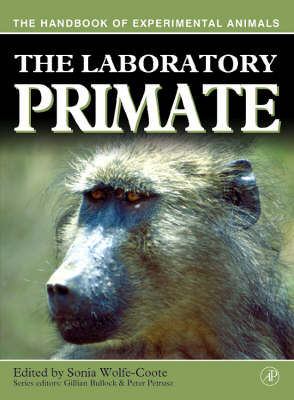
The Laboratory Primate
Academic Press Inc (Verlag)
978-0-12-080261-6 (ISBN)
A volume in the Handbook of Experimental Animals series, The Laboratory Primate details the past and present use of primates in biomedical research, and the husbandry, nutritional requirements, behaviour, and breeding of each of the commonly used species. Practical information on regulatory requirements, not available in other texts, is covered. Sections on experimental models cover the major areas of biomedical research, including AIDS, cancer, neurobiology and gene therapy. Assisted reproductive technology, tissue typing, and minimum group sizes for infectious disease/vaccine studies are also included.
Edited by Sonia Wolfe-Coote
Part 1: Definition of the Primate Model
1.1The Taxonomy of Primates in the Laboratory Context
1.2Similarities of Non Human Primates to Humans
1.3General Anatomy
1.4Pathology
1.4.1 Non infectious diseases
1.4.2 Common Viral Infections
1.4.3 Modelling Parasitic diseases in Non Human
Primates: Malaria, Chagas Disease and Filariasis
1.5Reproduction: Definition of a Primate Model of Female Fertility
1.6Male Reproduction and Fertilization
1.7Primate Natural History and Social Behaviour: Implications for Laboratory Housing
Part 2: Primate Management
2.1New World Primates
2.1.1 Husbandry and Management: Marmosets and
Tamarins
2.2Old World Primates
2.2.1 Practical Care & Management of Macaques
2.2.2 Vervet Monkey Breeding
2.3Nutrition and Nutritional Diseases
2.4Environmental Enrichment & Refinement of Handling Procedures
2.5Development of Specific Pathogen Free (SPF)
Non Human Primate Colonies
2.6Medical Care
Part 3: Current Uses in Biomedical Research
3.1Factors affecting the choice of species
3.2 Techniques & Procedures
3.2.1Anaesthesia
3.2.2Rigid Endoscopy
3.2.3Ultrasound Imaging in Rhesus (Macaca mulatta)and Long-tailed (Macaca fascicularis) Macaques: Reproductive & Research Applications
3.2.4 Functional Magnetic Resonances Imaging in Conscious Marmoset Monkeys : Methods and Applications in Neuroscience Research
3.2.5 Radiographic Imaging of Non Human Primates
3.2.6 Imaging: Positron Emission Tomography (PET)
3.3 Current Uses in Biomedical Research
3.3.1 The Use of the Primate Model in Research
3.3.2 Chronic Diseases
3.3.3 Practical approaches to Pharmacological
3.3.4 Non Human Primate Models of Human Aging
3.3.5 Primate Models of Neurological Disease
3.3.6 Genetics: A survey of Non Human Primate
Genetics, Genetic Management and Applications
to Biomedical Research
3.3.7 The Respiratory System & its use in research
3.3.8 Reproduction – Male
3.3.9 Reproduction – Female
3.3.10 The Baboon as an Appropriate Model for Study
3.3.11 Virology Research
3.3.12 Parasitic Diseases of Non Human Primates
| Reihe/Serie | The Handbook of Experimental Animals |
|---|---|
| Verlagsort | San Diego |
| Sprache | englisch |
| Maße | 200 x 273 mm |
| Gewicht | 1930 g |
| Themenwelt | Naturwissenschaften ► Biologie ► Allgemeines / Lexika |
| Naturwissenschaften ► Biologie ► Genetik / Molekularbiologie | |
| Veterinärmedizin ► Klinische Fächer ► Versuchstiere | |
| ISBN-10 | 0-12-080261-9 / 0120802619 |
| ISBN-13 | 978-0-12-080261-6 / 9780120802616 |
| Zustand | Neuware |
| Haben Sie eine Frage zum Produkt? |
aus dem Bereich


